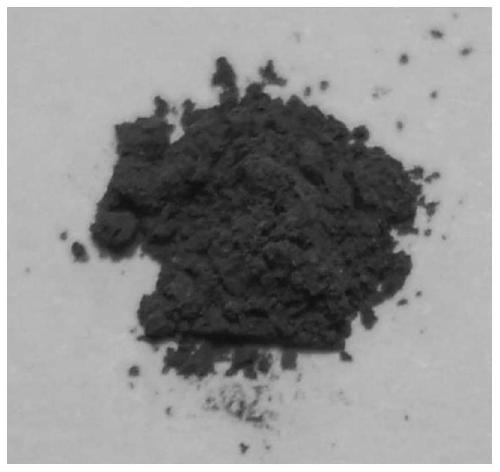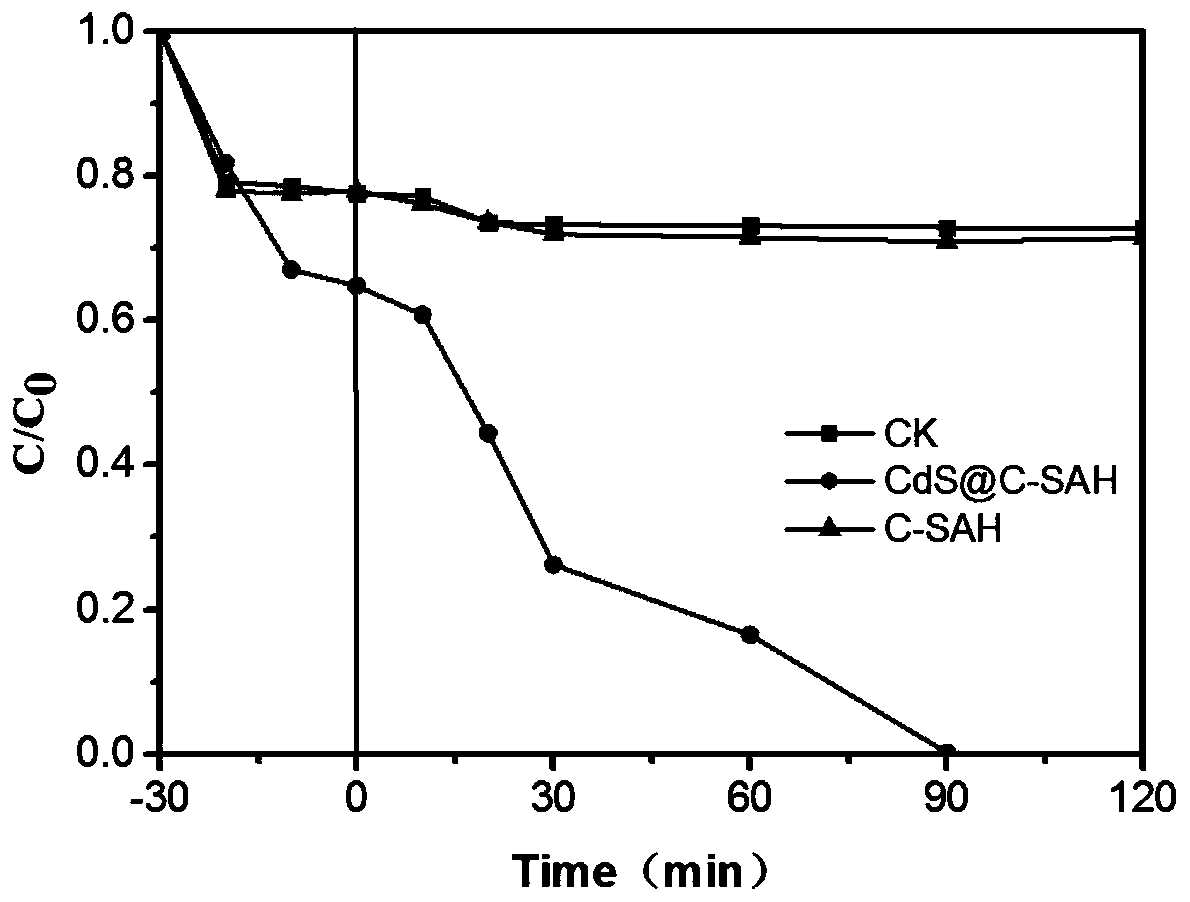Method for preparing photocatalytic material from cadmium hyperaccumulator and application
A technology of photocatalytic materials and super-enriched plants, which is applied in the field of environmental protection materials, can solve the problems of preparing photocatalytic materials without cadmium hyper-accumulated plants, and achieve the goals of promoting promotion and application, realizing full resource utilization, and narrow bandgap width Effect
- Summary
- Abstract
- Description
- Claims
- Application Information
AI Technical Summary
Problems solved by technology
Method used
Image
Examples
Embodiment 1
[0036] The preparation of the cadmium sulfide photocatalytic material of embodiment 1 carbon support
[0037] 1) Take the aboveground part of cadmium hyperaccumulator Sedum sedum, wash it with water, drain it, dry it in a drying oven at 105°C to constant weight, and pulverize it with a pulverizer to obtain a sample.
[0038] Take an appropriate amount of the pulverized sample in step 1), digest it, and use ICP-MS to detect that the content of cadmium in the sample is 9050 mg / kg (dry weight).
[0039] 2) Anaerobic carbonization stage: put the pulverized sample in step 1) into a corundum boat, place it in the center of the tube furnace, pass in nitrogen gas, and burn it at 300°C for 3 hours under the protection of nitrogen gas to obtain Cadmium Biochar.
[0040] 3) Micro-oxygen cadmium concentration stage: adjust the temperature in the tube furnace to 600°C, introduce nitrogen / oxygen mixed gas, the nitrogen / oxygen volume ratio is 6:1, continue firing for 0.5 hours, and then coo...
Embodiment 2
[0044] The preparation of the cadmium sulfide photocatalytic material of embodiment 2 carbon supports
[0045] 1) Take the aboveground part of cadmium hyperaccumulator Sedum sedum, wash it with water, drain it, dry it in a drying oven at 105°C to constant weight, and pulverize it with a pulverizer to obtain a sample.
[0046] Take an appropriate amount of the pulverized sample in step 1), digest it, and then use ICP-MS to detect that the content of cadmium in the sample is 9350 mg / kg (dry weight).
[0047] 2) Anaerobic carbonization stage: put the pulverized sample in step 1) into a corundum boat, place it in the center of the tube furnace, pass in nitrogen gas, and burn it at 700°C for 4 hours under the protection of nitrogen gas to obtain Cadmium Biochar.
[0048] 3) Micro-oxygen cadmium concentration stage: adjust the temperature in the tube furnace to 650°C, feed a nitrogen / oxygen mixed gas with a volume ratio of 6:1, burn for 1 hour, and then cool naturally to room tempe...
Embodiment 3
[0052] The preparation of the cadmium sulfide photocatalytic material of embodiment 3 carbon supports
[0053] 1) Take the aboveground part of cadmium hyperaccumulated Sedum chinensis, wash it with water, drain it, dry it in a drying oven at 105°C until it reaches constant weight, and grind it with a pulverizer to obtain a sample.
[0054] Take an appropriate amount of the pulverized sample in step 1), digest it, and then use ICP-MS to detect that the content of cadmium in the sample is 8950 mg / kg (dry weight).
[0055] 2) Anaerobic carbonization stage: put the pulverized sample in step 1) into a corundum boat, place it in the center of the tube furnace, pass in nitrogen gas, and burn it at 1000°C for 3 hours under the protection of nitrogen gas to obtain Cadmium Biochar.
[0056] 3) Micro-oxygen cadmium concentration stage: adjust the temperature in the tube furnace to 800°C, introduce nitrogen / oxygen mixed gas, and continue firing for 0.25 hours at a nitrogen / oxygen volume ...
PUM
 Login to View More
Login to View More Abstract
Description
Claims
Application Information
 Login to View More
Login to View More - R&D
- Intellectual Property
- Life Sciences
- Materials
- Tech Scout
- Unparalleled Data Quality
- Higher Quality Content
- 60% Fewer Hallucinations
Browse by: Latest US Patents, China's latest patents, Technical Efficacy Thesaurus, Application Domain, Technology Topic, Popular Technical Reports.
© 2025 PatSnap. All rights reserved.Legal|Privacy policy|Modern Slavery Act Transparency Statement|Sitemap|About US| Contact US: help@patsnap.com



